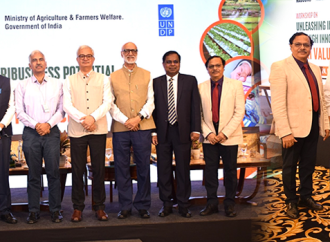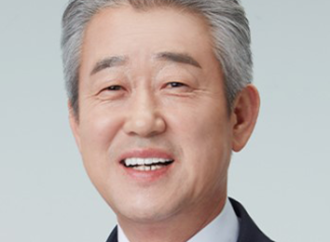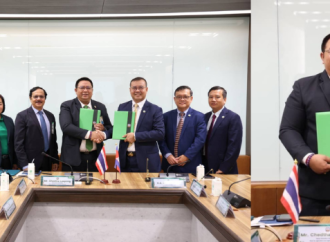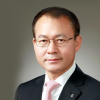Conference on Microfinance: Powering Innovations in Microfinance at the Asian Development Bank, Manila on July 24. Folowing is the full text of a speech delivered by the Governor Amando M. Tetangco, Jr. of the Bangko Sentral ng Pilipinas during the Conference on Microfinance: Powering Innovations in Microfinance at the Asian Development Bank, Manila on July
Conference on Microfinance: Powering Innovations in Microfinance at the Asian Development Bank, Manila on July 24.
Folowing is the full text of a speech delivered by the Governor Amando M. Tetangco, Jr. of the Bangko Sentral ng Pilipinas during the Conference on Microfinance: Powering Innovations in Microfinance at the Asian Development Bank, Manila on July 24. (This speech and other speeches may be viewed at BSP website: www.bsp.gov.ph
Building a Stronger Economy Through Microfinance
Microfinance Council of the Philippines President Rolando Victoria, ADB Vice President Lawrence Greenwood, ADB ED Marita Magpili Jimenez, Mr. Barry Hitchcock, other officers of ADB, fellow advocates and workers in microfinance, distinguished participants, representatives from the banking community, special guests, good morning.
This two-day conference organized around the theme “Powering Innovations in Microfinance” is truly a special event.
Ten years ago, one would not associate the words power and innovations with microfinance in the Philippines. While some of today’s leading microfinance NGOs were already around at that time, microenterprises did not have access to formal financial services and had to resort to informal lenders with very high cost of funds. Formal financial institutions were cautious of this market due to high credit risk and transaction costs.
What a difference a decade makes! Today, microfinance is no longer a mere buzzword but part of the financial mainstream, with 229 banks actively engaged in the sector. As of December 2007, these banks had an outstanding loan portfolio of P6 billion, extended to nearly 800,000 clients or an average of 7,500 pesos per borrower. Significantly, our micro-borrowers have also become net savers; as of end 2007, their combined deposits with banks have reached close to 2 billion pesos.
Indeed, microfinance has firmly established a track record across our country for nurturing successful microentrepreneurs who have attained financial security for themselves and their families. Equally important, microentrepreneurs serve as catalyst for development in their respective communities.
What triggered the mainstreaming of microfinance in our country? Well, to put it briefly, it resulted from the convergence of the need to find ways to liberate millions of our entrepreneurial poor from the cycle of poverty; innovations, of course; and the willingness of key stakeholders to adopt new ways of doing business.
I will now share the story of Bangko Sentral and how we responded to the challenge of mainstreaming microfinance within our financial system.
The Bangko Sentral was mandated by the General Banking Law of 2000 to recognize microfinance as a legitimate banking activity. As a start, we studied the practice of microfinance around the world and engaged practitioners in many discussions. Next, we set in place regulations that recognized and built on best practices; this included using group support or liability, cash flow-based lending, and providing for frequent amortizations.
We also created an environment that allowed for new entrants into the market, particularly microfinance-oriented banks which are licensed as regular banks but dedicate at least 50% of their loan portfolio to microfinance. This became an ideal vehicle for microfinance NGOs that wanted to transform into a formal financial institution.
In addition, we liberalized branching regulations and paved the way for innovations in products and service delivery using information and communication technology (ICT) and other similar means.
I should emphasize that even as we make room for innovations in the banking system, we make a point to balance this by instituting prudent standards for the conduct of microfinance operations. Among others, this includes prescribing the use of portfolio-at-risk to monitor and measure portfolio quality. Likewise, we have instituted reporting requirements for banks with microfinance operations.
This enabling policy and regulatory environment has allowed microfinance to flourish within the banking sector. Today, banks are considered one of the main players in the country’s microfinance industry.
This commercialization is a reflection of global trends. Today, global financial giants are setting up dedicated offices for microfinance. We also know of some microfinance institutions that are publicly listed. And loan portfolios are being securitized.
The range of players involved in the industry is also becoming more diverse. Private equity firms, commercial banks, and even cement and real estate companies are investing in microfinance institutions around the world. Even mobile phone manufacturers are looking at microfinance as a means to increase mobile phone penetration in several countries .
The entry of new players into the sector should drive the introduction of even more new products and services, as well as new ways of doing business. At present, we see microfinance institutions offering a whole menu of services that covers not only microcredit but also microsavings to microinsurance. This is definitely a significant leap from institutions previously offering only microcredit.
The technology and methodology of microfinance has also been used to provide financing needs in the areas of agriculture and housing, among others. In the Philippines, practitioners have developed the Micro-Agri Product and more recently the breakthrough Housing Microfinance Product which the Bangko Sentral recognizes as variations of a microfinance loan.
Indeed, we continue to innovate because the financing needs of microfinance clients go beyond simple business loans. With more appropriately designed loan products, microfinance institutions are now able to respond to the varied needs of their clients, diversify their portfolios, and reduce the risk of business loans applied to agriculture or housing.
Parallel to the development of products offered by microfinance institutions, significant changes are also taking place in their delivery channels. Microfinance institutions are increasingly recognizing how information and communication technology can provide revolutionary channels to better serve existing clients or an opportunity to reach new ones.
These new channels – such as mobile phones, automated teller machines (ATMs) and point of sale (POS) card readers – have also brought with them significant improvements in efficiency and convenience, while lowering costs for both the microfinance institutions and their clients. In the Philippines, for instance, rural banks have tied up with mobile phone companies to facilitate microfinance loan payments, deposits, and withdrawals through a simple SMS or text message.
In other words, the microfinance landscape in our country continues to evolve… in step with client needs and innovations in technology and the regulatory framework. The challenge before us is to further broaden and deepen the reach of microfinance in the Philippines.
At the Bangko Sentral, we accept this challenge and commit to uphold an enabling policy and regulatory environment that will allow microfinance to flourish further. We will continue to monitor the many developments and innovations taking place in the world of microfinance so that we can maximize the benefits we can derive from it.
To strengthen our capacity in this regard, we have organized a special unit which we call Inclusive Finance Advocacy, to explore and facilitate the development of new options to improve and increase access to financial services of our people. We have also created a MicroSME Finance Specialist Group in our Supervision and Examination Sector for banks with significant exposure to Micro and SME lending. This group has been trained on risk-based supervision and the peculiarities of lending to the MSME sector. I should add that these initiatives of the Bangko Sentral toward broader financial inclusion will continue to be guided by a high-level Microfinance/ Inclusive Finance Committee.
Actually, our objective to have a more inclusive financial system is embedded in the other policy initiatives of the BSP. We are continuously working on reforms for a more robust banking sector. We are also working toward increasing the scale and scope of bank operations to support the needs of the market, particularly those in the countryside.
What is clear is that banks now have more opportunities to provide a wider range of services and products to their clients on the basis of the following: a liberalized branching regime; Bangko Sentral’s receptiveness to various product and technological innovations in banking services; Bangko Sentral’s support to further improve bank efficiencies by allowing, among others, the outsourcing of some functions; and the expanded range of services and opportunities that qualified rural banks can undertake, such as foreign currency deposit accounts and equity investments in ATM networks.
Through these initiatives, we envision stronger banks with a broader geographical presence… providing competitively-priced and well-designed products for all market segments, including the previously unserved.
With these in place, I am confident that we will continue to see further innovations toward greater financial inclusion. In this context, I am reminded of Bill Gates who once said that “Never before in history has innovation offered promise of so much to so many… in so short a time”.
It is in this spirit that I ask all of you who are participating in this conference…and other microfinance practitioners as well… to continue to take advantage of the opportunities innovations bring, to broaden… and sustain the liberating and empowering force of microfinance in improving the lives of our entrepreneurial poor and their families.
Finally, on behalf of the Bangko Sentral ng Pilipinas, I thank all of you for your continuing support as we move forward to build better lives and a solid bedrock for a stronger economy… through microfinance.
Thank you and I wish you all a fruitful and successful conference.
Mabuhay ang microfinance!















